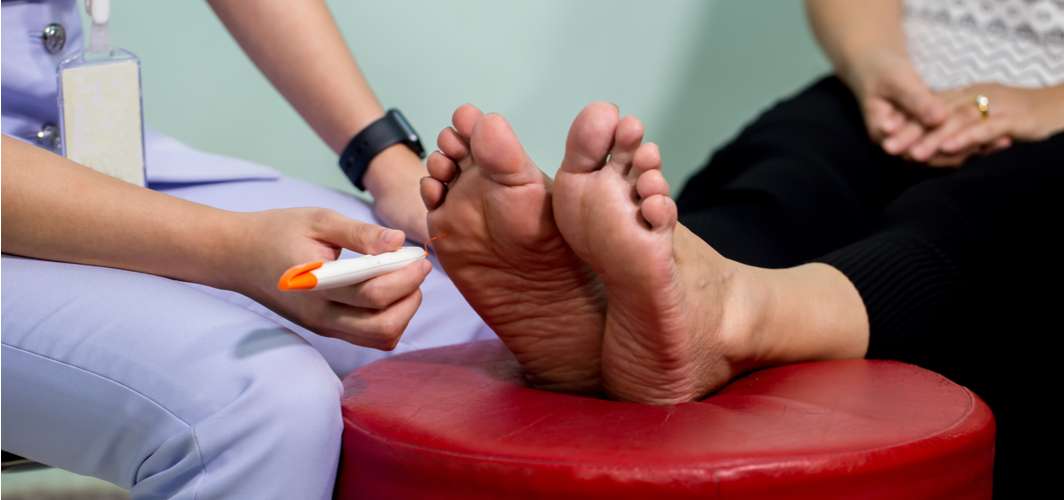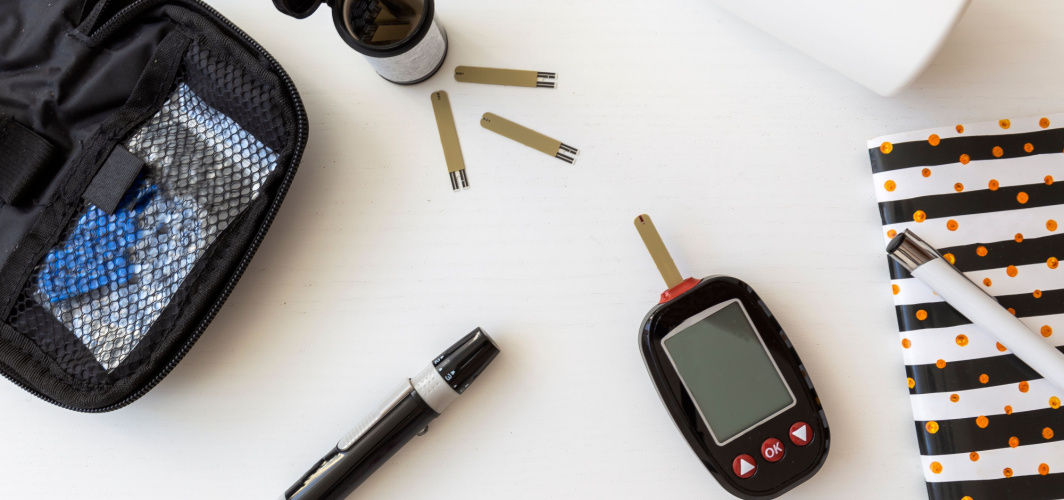Diabetes Management
Somogyi Effect: What Does That Early Morning Blood Sugar Spike Mean?
5 min read
By Apollo 24/7, Published on - 29 April 2021, Updated on - 29 August 2023
Share this article
0
14 likes

Normally, people diagnosed with type 2 diabetes, the more common type of diabetes, are prescribed oral anti-diabetic medications. However, if they are unable to manage their blood sugar levels with the help of medications, diet and lifestyle change, they need to take insulin. It has been reported that despite taking medications or insulin as per the doctor’s advice, some type-2 diabetics often experience a hike in their blood sugar levels early in the morning, which is known as the Somogyi effect.
What is the Somogyi effect?
The Somogyi effect, also known as the ‘chronic Somogyi rebound’ and ‘posthypoglycemic hyperglycemia’, was proposed by a Hungarian professor Dr Michael Somogyi in 1930. He discovered that when the blood sugar levels of the body drop too low in the late evening or at night while sleeping, there is an activation of counter-regulatory hormones which instigate gluconeogenesis (conversion of glycogen into glucose). This results in increased blood sugar levels (hyperglycemia) in the early morning.
What happens in the Somogyi effect?
The Somogyi effect is the response of the body’s defence mechanism to the long period of low blood sugar in a person suffering from type-2 diabetes. This can occur after vigorous exercise or if the person has taken more insulin than required, before going to bed.
Insulin is a hormone naturally produced by the pancreas, which helps in maintaining the levels of glucose (sugar) in the blood.
Due to the sudden drop in blood sugar levels, various hormones such as growth hormones, and stress hormones (cortisol and epinephrine) are released in the body, which triggers the release of glucagon, a hormone produced by the pancreas. Glucagon counteracts the action of insulin and promotes the production of glucose in the liver by converting glycogen (stored form of glucose) into glucose, resulting in increased blood sugar levels.
Simultaneously, the stress hormones keep the blood sugar levels high by not allowing the body cells to respond to insulin, resulting in insulin resistance.
What are the characteristics of the Somogyi effect?
The characteristics of the Somogyi effect include:
- Low blood sugar levels due to increased insulin, followed by high blood sugar levels due to the rebound defence mechanism of the body.
- Initially, no signs of sugar and ketone bodies are found in the urine, but are detected after a few hours.
- Wide fluctuation in the blood sugar levels which is not related to food habits.
- Slightly low body temperature (mild hypothermia).
- Symptoms such as night sweats, nightmares, weakness in the evenings and extremely high blood sugar in the morning (with no known reason).
How is the Somogyi effect different from the Dawn phenomenon?
Another phenomenon known as the dawn phenomenon has been confused with the Somogyi effect since both of them result in blood sugar spikes in the morning. However, there are many differences between them which include:
- Dawn phenomenon or dawn effect is a state where a person diagnosed with diabetes experiences increased blood sugar levels in the morning due to the inability of the pancreas to release insulin at night to maintain the blood glucose. On the other hand, the Somogyi phenomenon occurs due to the release of counter-regulatory hormones to cope with the low glucose levels at night.
- In the Somogyi phenomenon, there is a state of low blood sugar level (hypoglycemia) which is followed by early morning hyperglycemia. However, in the dawn phenomenon, no hypoglycemic episodes are reported.
- In the dawn effect, the blood sugar levels stay high throughout the night. On the other hand, in the Somogyi effect, the blood sugar levels drop at some point during the night.
How to manage blood sugar levels when diagnosed with the Somogyi effect
Diabetics experiencing the Somogyi effect can manage their blood sugar levels in the morning by:
- Setting an alarm for 1 or 2 A.M. for few nights to check their blood sugar levels. This would help the doctor make adjustments in the insulin dose or other medications.
- Using a continuous glucose monitoring (CGM) device to track the blood sugar levels throughout the day as the device automatically collects the reading every 5 minutes.
- Avoiding exercise before going to bed.
- Switching to an insulin pump that can be programmed accordingly to release less insulin at night.
- Consuming a carbohydrate-rich snack before sleeping to prevent hypoglycemia at night.
- Instead of using short or intermediate-acting insulin such as Neutral Protamine Hagedorn (NPH) insulin, the doctors may prescribe the use of long-acting insulin such as Glargine, which can help reduce hypoglycemia at night.
- The doctors may also reduce the dose of diabetes medications or insulin to reduce the possibility of hypoglycemia.
What can be the other reasons for high blood sugar levels in the morning?
Apart from the Somogyi effect and the dawn phenomenon, other reasons that may cause a hike in the blood sugar levels in the morning include:
- Reduced basal insulin: Generally, the insulin given to the diabetics mimics the activity of natural insulin and reduces the risk of hypoglycemia by sustained release of basal insulin (long-acting insulin) throughout the day. When the levels of basal insulin are low in the body, the body does not receive enough insulin at night, resulting in high blood sugar levels in the morning.
- High-fat diet: Consuming a diet high in fats or carbohydrates can prevent insulin from working properly by increasing insulin resistance in the body, ultimately leading to high blood sugar levels. A meal plan with balanced nutrients is generally recommended to keep such spikes at bay.
- Lack of sleep: Sleep deficiency can increase the production of cortisol, which can keep the blood sugar levels high throughout the day. It is recommended that people with diabetes get a good night’s sleep, which is a great antidote to blood sugar fluctuations.
Takeaway
It is difficult to diagnose the Somogyi effect due to several reasons such as lack of awareness, varying symptoms, and the presence of other possible health conditions. Moreover, some studies have shown that patients having hyperglycemia early in the morning tend to have high blood glucose levels at night, rather than low.
Since there is a constant debate about the accuracy of Somogyi's theory, diabetics must stick to the diet, exercise, and medicine regime they’ve been prescribed. Any unusual spikes or patterns must be monitored and reported to the doctor.
For any diabetes-related query, you can speak with a diabetologist.
You can also manage your diabetes like a pro with Apollo 24|7's 12-week empower programme.
Diabetes Management
Consult Top Diabetologists
View AllLeave Comment
Recommended for you

Diabetes Management
Diabetic Foot: Can it be Prevented?
The development of diabetic foot can be prevented through various measures. Effective prevention includes regular foot care, such as daily inspection and cleaning, wearing comfortable and proper-fitting shoes, managing blood sugar levels, controlling blood pressure and cholesterol, maintaining a healthy lifestyle, avoiding smoking and alcohol consumption, and seeking immediate medical attention for any foot issues.

Diabetes Management
Juvenile Diabetes: Early Signs to Watch out For
Juvenile diabetes, also known as type 1 diabetes, can have various early signs in children, including dehydration and excessive thirst, frequent urination, extreme hunger, persistent fatigue, vision disturbances, fruity-smelling breath, yeast infections, gastrointestinal symptoms, mood changes, and delayed healing of wounds. It is important to consult a doctor if a child exhibits any of these symptoms.

Diabetes Management
A Step-By-Step Guide To Using A Glucometer
Regular blood sugar monitoring is crucial for effective diabetes management. Glucometers, portable devices that measure blood glucose levels at home, offer convenience. To use a glucometer, start by gathering necessary supplies: soap or alcohol prep pads, test strips, a lancing device with a new lancet, and a notepad or smartphone app to record results. Follow these steps: clean your hands, turn on the glucometer, prick your fingertip, apply blood to the test strip, stop bleeding, and record the results.
Subscribe
Sign up for our free Health Library Daily Newsletter
Get doctor-approved health tips, news, and more.
Visual Stories

8 Fruits That are Incredibly Healthy for Diabetes
Tap to continue exploring
Recommended for you

Diabetes Management
Diabetic Foot: Can it be Prevented?
The development of diabetic foot can be prevented through various measures. Effective prevention includes regular foot care, such as daily inspection and cleaning, wearing comfortable and proper-fitting shoes, managing blood sugar levels, controlling blood pressure and cholesterol, maintaining a healthy lifestyle, avoiding smoking and alcohol consumption, and seeking immediate medical attention for any foot issues.

Diabetes Management
Juvenile Diabetes: Early Signs to Watch out For
Juvenile diabetes, also known as type 1 diabetes, can have various early signs in children, including dehydration and excessive thirst, frequent urination, extreme hunger, persistent fatigue, vision disturbances, fruity-smelling breath, yeast infections, gastrointestinal symptoms, mood changes, and delayed healing of wounds. It is important to consult a doctor if a child exhibits any of these symptoms.

Diabetes Management
A Step-By-Step Guide To Using A Glucometer
Regular blood sugar monitoring is crucial for effective diabetes management. Glucometers, portable devices that measure blood glucose levels at home, offer convenience. To use a glucometer, start by gathering necessary supplies: soap or alcohol prep pads, test strips, a lancing device with a new lancet, and a notepad or smartphone app to record results. Follow these steps: clean your hands, turn on the glucometer, prick your fingertip, apply blood to the test strip, stop bleeding, and record the results.